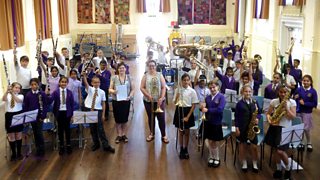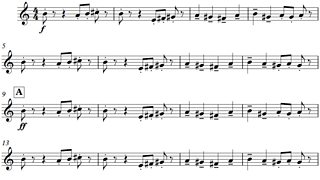Symphony No. 1 in G major – Allegro by Joseph Bologne, Chevalier de Saint-Georges
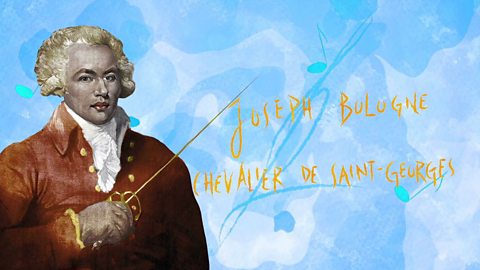
Symphony No. 1 in G major – Allegro by Saint-Georges: An exciting introduction
Naomi Wilkinson explores the music of Saint-Georges using facts, insight and animation.
Behind this classical symphony is an extraordinary story of a composer who took Paris by storm.
A contemporary of Mozart's, Saint-Georges became a champion fencer, virtuoso violinist, and a famous composer and conductor. His hands wielded the foil, the bow and made music with equal skill!
Allegro (which means play at a lively speed) is the first movement from this symphony, which premiered in 1779.
Listen out for: The fast and intricate violin parts. Saint-Georges was one of the best violinists of his time and wrote complex music to show off his skills!
Watch the introduction film at the top of the page then starting exploring the music:
Watch the full orchestral performance
Watch the full performance of the piece, played by the Â鶹¹ÙÍøÊ×Ò³Èë¿Ú Symphony Orchestra and conducted by Rafael Payare:
MP3: Listen to or download the music
Download the
To save to your computer: PC - right-click and save, Mac - ctrl-click and save.
Lesson plans: Six weeks of learning and activities
Download lesson plans for six weeks of learning and activities for Symphony No. 1 in G major – Allegro, as Powerpoint presentations or PDFs. These lesson plans are ideal for music lessons, but you can of course use the Ten Pieces in many other subjects and activities. Take a look at our for inspiration.
To enable all images to work in the Powerpoint files please save the file to your computer. To save to your computer: PC - right-click and save, Mac - ctrl-click and save.
Primary lesson plans:
- (Powerpoint)
- (PDF)
Suitable for:
- Key Stage 2 in England and Wales
- Second Level, P5-P7 in Scotland
- Key Stage 1/Key Stage 2 in Northern Ireland
Written by Rachel Leach.
Arrangements: Play the piece with simplified parts
All parts have been designed to work together to enable mixed-ability groups to perform together. See more information about the parts below.
Beginner/pre-Grade 1:
- | | |
- | | | |
- | | | | |
Intermediate/Grade 1-3:
- | | | |
- | | | |
- | | | | | |
- |
Grade 4-5:
- | | | |
- | | | | |
- | | | | | | | |
Other scores:
Please get in touch with the Ten Pieces team if there are minor adjustments you would like to make for your ensemble.
Notes from the arranger
By Iain Farrington
All parts have been designed to work together to enable mixed-ability groups to perform together. A certain amount of simplification has been required to adapt the pieces for mixed-ability. Some pieces have been cut to allow a 3-5 minute general duration and to remove especially difficult passages of music. A successful rendering of each piece would require the essential melodic material and bass line which are often in the Grades 4/5 parts, especially in the piano.
There are scores for each difficulty level plus three other scores for each piece:
- Grouped according to ability
- Grouped according to instrument type
- 'Short score' in C, grouped according to ability
There are three ability levels – beginner, intermediate (Grades 1-3) and Grades 4-5.
- Flute parts can be played by the violins
- Oboe parts can be played by the flutes and violins
- Trumpet parts (in Bb) can be played by the clarinets
- Violin parts can be played by the flutes (except when in the lowest register)
- The 'percussion' part is a beginner part and can be played on any drum. It adds a simple rhythm layer to each piece. Timpani and full percussion parts are for intermediate or Grades 4/5
Please note:
Symphony No. 1 in G major – Allegro: Note values have been halved (4/4 rather than 2/2) to allow counting in crotchets rather than minims. There is a cut from bar 50 to bar 189 in the original.
Watch the full performance
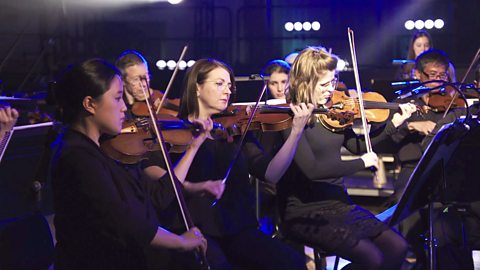
Symphony No. 1 in G major – Allegro by Joseph Bologne, Chevalier de Saint-Georges: The full performance
Watch the full performance of Saint-Georges' piece by the Â鶹¹ÙÍøÊ×Ò³Èë¿Ú Symphony Orchestra.
About the composer
JOSEPH BOLOGNE, CHEVALIER DE SAINT-GEORGES
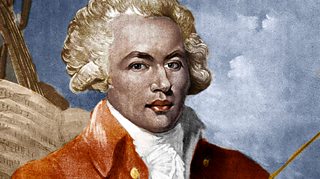
BORN: 1745 / DIED: 1799 / NATIONALITY: French
Aside from being a champion fencer and a virtuoso violinist and conductor, Saint-Georges has the distinction of being the first classical composer of African ancestry. His parents were a wealthy slave owner on a plantation in the West Indies and a slave - many elements of Saint-Georges' life would make a great movie plot! So little is known of his musical training, that several myths have grown up around it. We do know that he eventually became the leader of a very good Parisian orchestra and performed his concertos with them, improvising solos at several points and wowing the audience. His appearances with this orchestra led to it being declared the best in France. Saint-Georges wrote two symphonies, several concertos, much chamber music and at least 6 operas. He pursued both fencing and music throughout his life, and towards the end of his life finally admitted that music was his true love.
